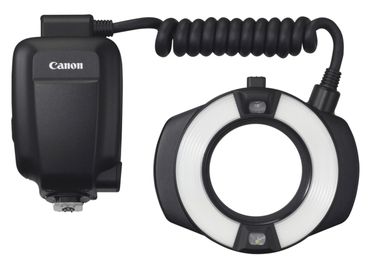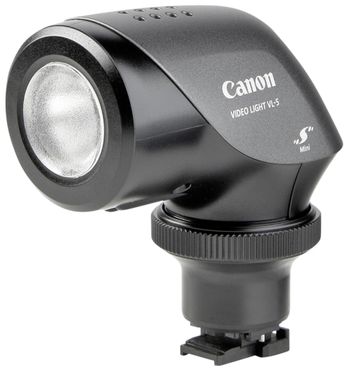Canon flashes - For better shots even in low natural light
In some shooting situations, the light is so poor that the photographer has no choice but to turn on the flash. If you do not use the flash in low light, you risk blur or underexposure. Most amateur photographers, however, use the camera flash with an uneasy feeling because they are aware that numerous beautiful pictures have already been ruined by the use of the flash. Not only red eyes of the photographed persons are a problem, but also hard shadows and a strong decrease in brightness disturb the impression of the picture. Yet the flash is actually so unjustly frowned upon, because with the right flash technique and a little background knowledge about the correct use of the flash, it is possible to create natural images even with the flash switched on.
To do this, an external flash unit is the be-all and end-all. It is a universal light source in digital photography because it is not dependent on the mains supply and still provides a lot of light in a very small space. Moreover, it can do much more than just compensate for a lack of natural light. There are numerous lighting effects that are only possible with a flash unit. Many photos would be blurred or underexposed or simply too dark to see anything at all without the flash. A good flash unit can therefore help you to take professional, natural-looking pictures even with a flash, which would not have been possible otherwise.
Owners of a Canon DSLR are well advised to buy an original Canon flash unit. In this category we offer a wide range of flash units for Canon cameras. The range of in-house flash units is large with this company. The models are sold under the name "Speedlite". If you don't know which flash is well suited to your needs or simply need more information about the different flash units in the range, scroll down to the shop section below. There we have summarised a lot of useful information about the individual flash units from Canon.
Which aspects are important when buying a flash unit?
Before you buy a flash unit, you should find out more about the different features that distinguish the individual models. This applies in particular to the guide number, the aperture gradations, the operation and the zoom range. The guide number describes how much light the flash unit can produce. The higher this number, the better the flash output and the more expensive the flash unit. The intensity of the system flash is regulated via apertures, which is why you should make sure when buying that the flash is able to regulate as wide a range as possible. Then it can also be used very sensitively.
Operation is also an important issue when buying a flash unit. An automatic mode (TTL) should be available as well as the possibility for manual settings. It is ideal if the flash has a master-slave function to communicate with several other flash units. The zoom range of the flash unit regulates how strong the radiation is to the sides. In this way you can determine that the lens area receives sufficient light. In addition, you can expose individual areas in a very targeted manner. In addition, it is practical if the flash has an AF-assist light. This proves to be an advantage especially in a darkened studio.
The Canon entry-level flash
The smallest Canon Speedlite plug-in flash is the 90EX, which is why it is especially suitable for the manufacturer's mirrorless system cameras. It is ideal for indoor shots and portraits. It is very compact and light, so that it hardly weighs anything on the camera. However, the guide number is only 9, so the flash unit is not overly powerful. In addition, this model does not have a swivelling flash head, which is why you can only flash directly. This eliminates many design possibilities from the outset. What is practical is that it has a master function and can therefore also control other external flash units.
The slave flashes in the Canon range
The Speedlite-270EX-II, which offers a guide number of 27 and is therefore already quite powerful, is ideal for unleashed flashes. With this model, you can also tilt the head upwards, which gives you shadow-free and soft illumination because the flash reflects off the white ceiling. The Speedlite-320EX is also a slave flash. It has a practical video light.
The all-round flashes in the Canon flash portfolio
A classic all-round flash for advanced and professional photographers is the Speedlite 430EX II. It brings a guide number of 43 and has E-TTL II flash metering. This means that no settings have to be made on the flash unit for the focal length range, because the camera automatically exchanges the necessary information with the flash. An AF-assist light is also on board here. In addition, the flash reflector can be rotated 180 degrees.
High-end flash for professionals
Even more power comes with the 600EX flash unit, which was developed for professional use. Its guide number is 60. Apart from that, it has the same features as the 430 Speedlite. However, it has the added advantage that it is well protected against environmental influences and can also be used under adverse conditions. The equipment also includes an illuminated LCD display that facilitates intuitive use. Creative flash modes such as strobe flash and short-time sync are also available. This flash can function as both master and slave.
Flashes for exotic applications
Last but not least, Canon's flash portfolio also includes exotic flash units that are suitable for special applications. One of these, for example, is the Macro Ring Lite MR-14 EX II, which was developed for macro photography. The Macro Twin Lite MT-24EX flash is also suitable for close-up photography.
Overview of the most important advantages and disadvantages of Canon flash units
Are you unsure whether you are making the right choice with a Canon flash unit? Then take another look at the following list, which summarises all the advantages and disadvantages of the flashes and should therefore make your decision easier:
Advantages:
Short flash loading times
Multiple uses for flash units
Perfect for creative shots in the studio or outdoors
Excellent quality
The drawbacks:
Partially heavy weight of flash units
Reasonably high purchase price
As with all Canon original accessories, you naturally pay a comparatively high price for a Canon flash unit. In our opinion, however, it pays off because the advantages of professional flash units simply outweigh the disadvantages. Provided it doesn't break your budget, you certainly won't make a mistake with one of the clip-on flashes in this category.


Simply subscribe and benefit as a newsletter recipient every week: